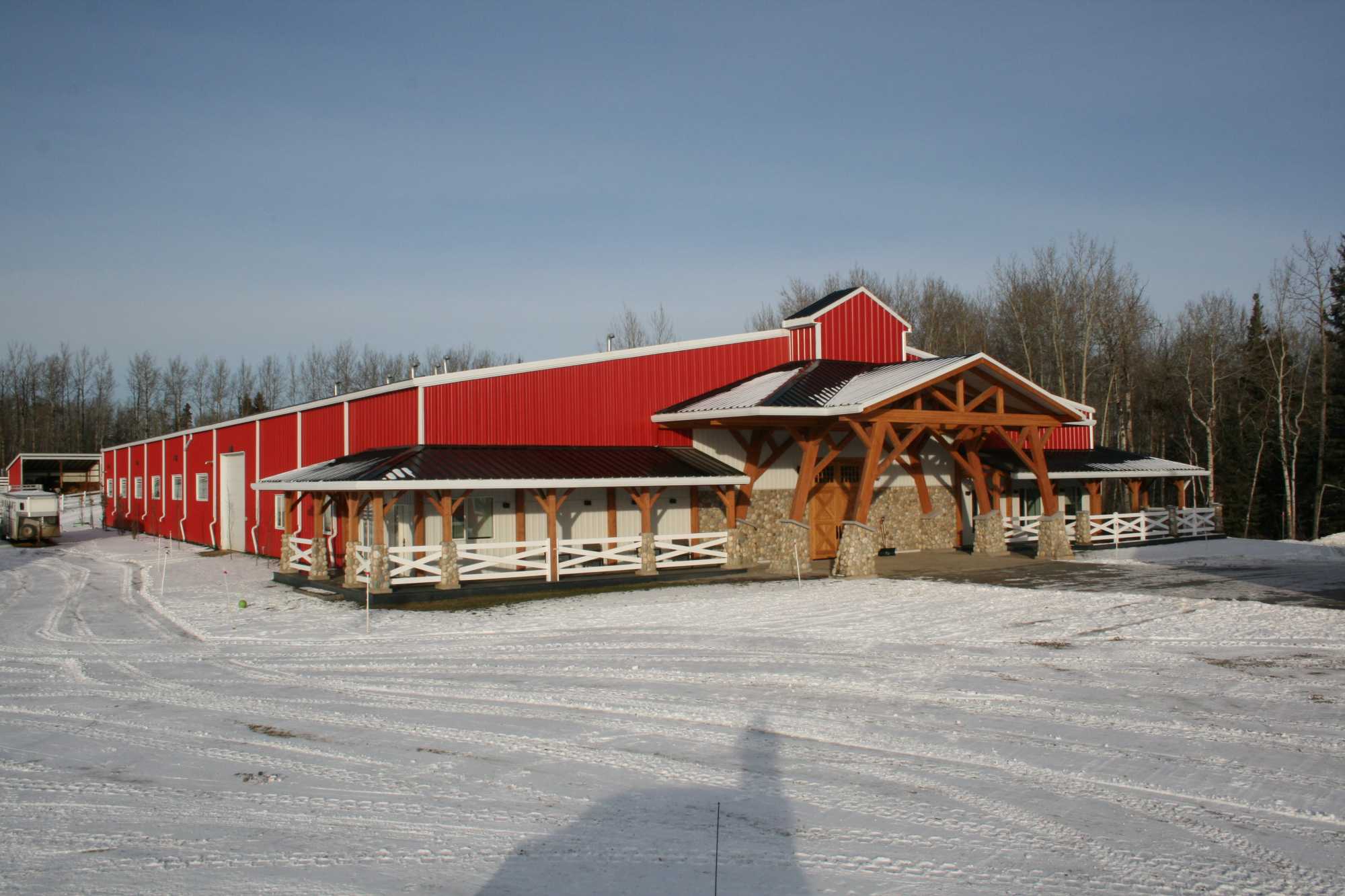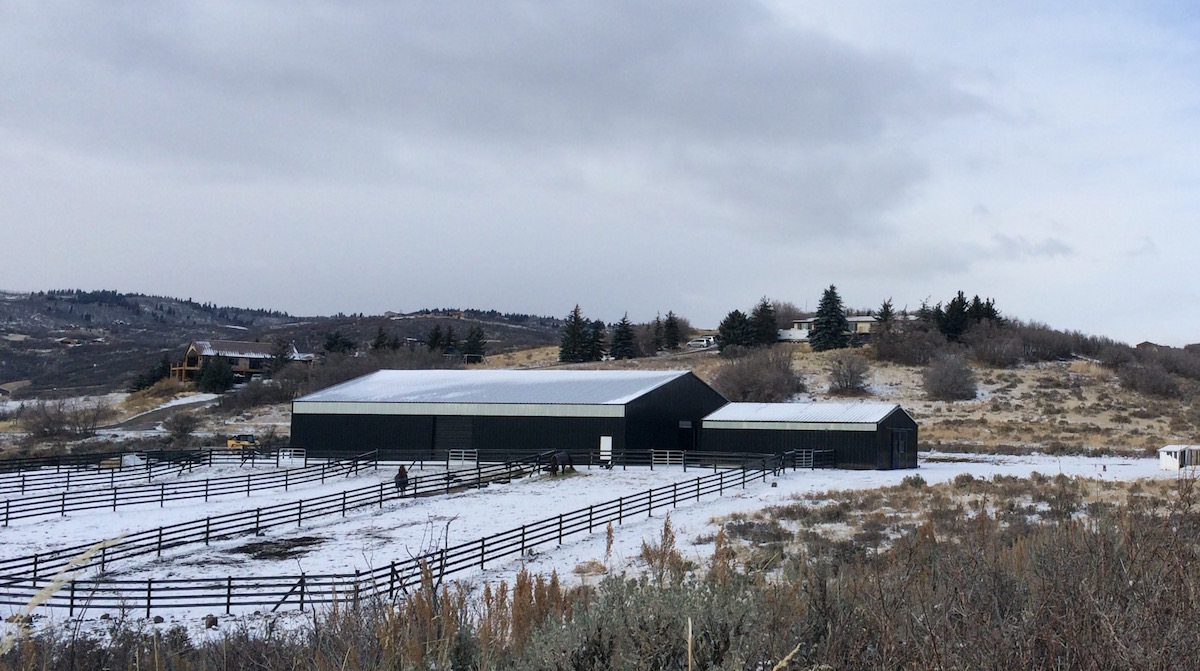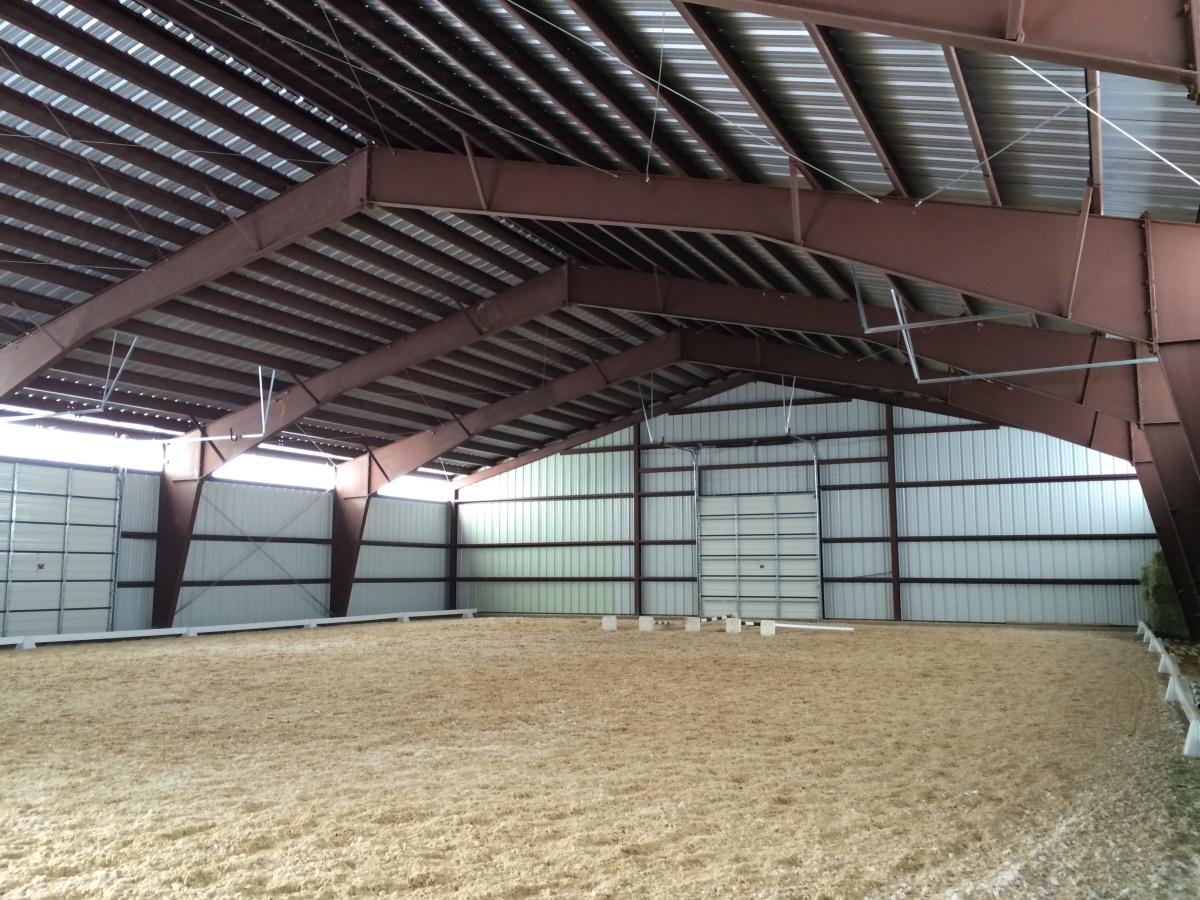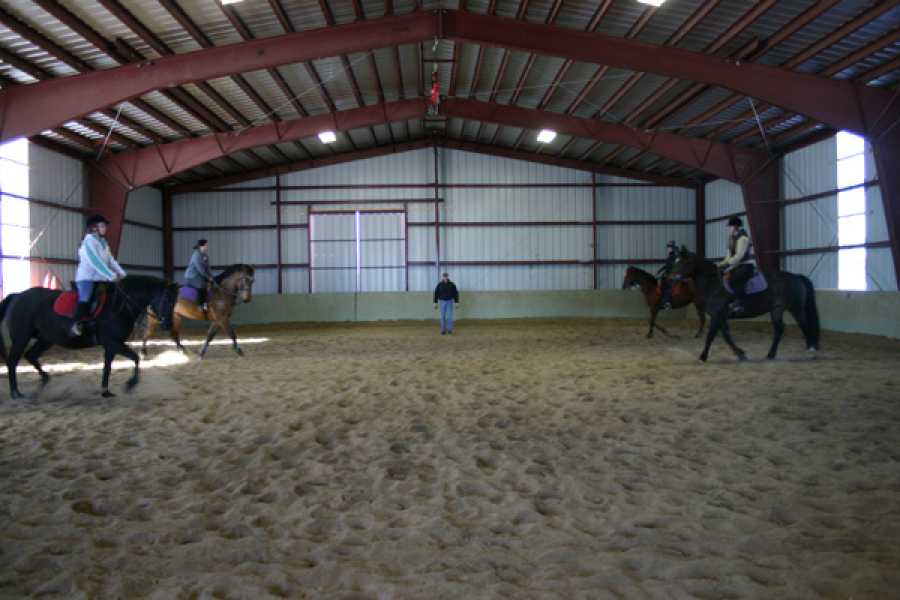
Indoor Steel Building Riding Arena
Indoor Horse Riding Arena Costs Explained.
With the sort of winters parts of the country get, an indoor riding arena can be a worthwhile investment if you don’t want the elements to stand between you and your equine friends.
Even in the sunny parts of the country, where the weather can get too wet or too frozen for a few solid weeks to set the hoofs outdoors, investing in a Equestrian Facility makes real sense.
While there is certainly no “one-size-fits-all” approach to building and designing an indoor riding arena, taking into consideration the cost factors involved should give you an idea of what you can expect to spend on the project.
This post will walk you through the different cost factors involved in building an indoor riding arena—and where possible will give you a ballpark figure for each—to help you get started with your project.
Cost of Building an Indoor Riding Arena
The cost of building an indoor riding arena is mainly determined by the following:
- Structure type of the arena
- Size of the arena
- Location of the arena
- Optional structural elements for the indoor riding arena
- Functional elements of the arena
Structure type of the arena
When we talk about structure type, there are basically three options that you can choose from:
Fabric covered structure
This type of structure consists of a steel frame that’s covered by a translucent fabric roof, commonly made from polyethylene. The maximum free-width of a fabric covered structure can expand up to 200 feet, making it an ideal structure type for indoor riding arena construction projects. It has one main drawback though; it’s difficult to insulate.
Wood frame structure
As the name indicates, a wood frame structure is made entirely from wood. It offers greater design flexibility compared to fabric covered structure, allowing contractors to incorporate doors and windows along the length of the arena. The doors and windows control the amount of natural light entering into the building.
Another advantage of a wood frame structure is that you can easily insulate its roof and walls if you want. That said, a wood frame construction has a limited width, usually around 90 feet, which makes its use impractical for large sized arenas. Also, it needs to be carefully designed with the right combination of treated and untreated lumber to ensure structure longevity.
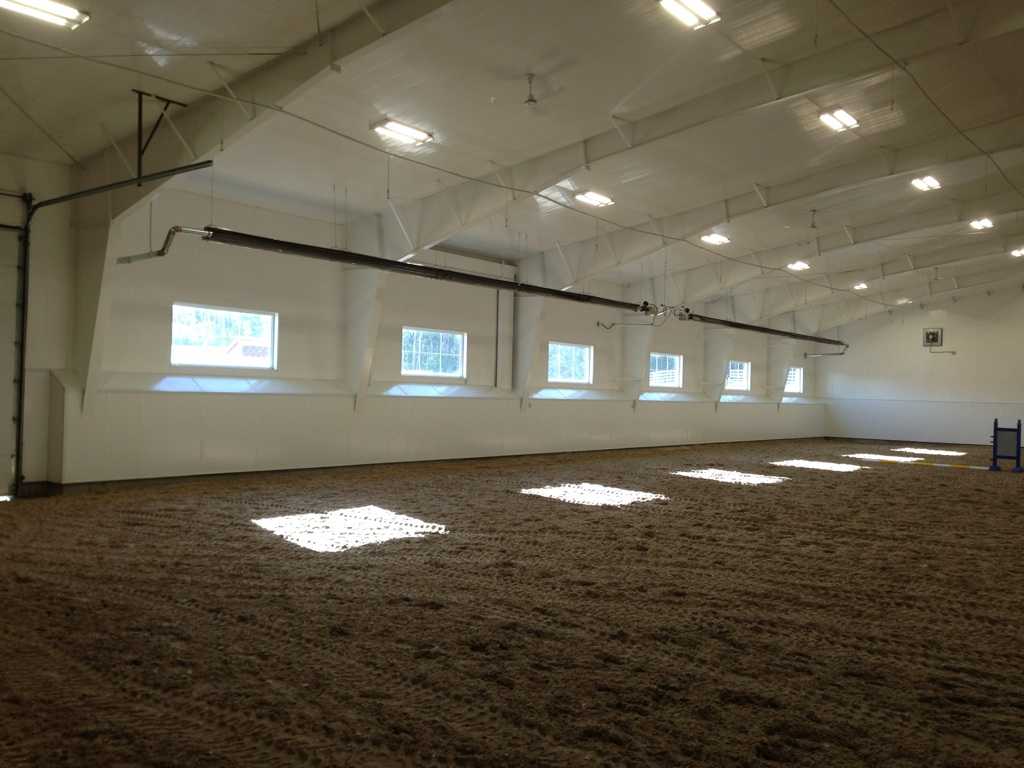
Steel frame structure
A steel frame structure accommodates the highest arena width—to 200 feet or more—of all structure types. It’s free of posts and columns, providing an obstacle-free field for riding.
Like wood frame structures, roof and walls of a steel frame structure can easily be insulated for comfortable winter horse training. Vendors typically offer steel frame structures in the form of pre-fab buildings, where the complete arena is fabricated offsite and is later transported to the site for assembly.
An indoor riding arena built from a steel frame structure is known for its durability, strength and robustness.
A pointer: In terms of cost, wood frame arenas are more expensive to build than fabric covered or steel frame arenas; the latter category of arenas, steel, generally requires the least amount of investment. This, however, may vary depending on the contractor/manufacturer you hire for the project.
Size of the arena
The size of the arena also plays a very important role in determining the cost of the project. The bigger the size of your arena, the higher the cost. This doesn’t mean, however, that you can compromise on the size of your arena just to reduce project cost. At the end of the day, you want to invest in an indoor riding arena that’s adequately sized so it can meet your needs for years to come.
The size of an indoor riding arena is specified in width, length and height.
- The minimum recommended width for an indoor riding arena is 60 feet
- The minimum recommended length for an indoor riding arena is 120 feet
- The minimum recommended height for an indoor riding arena is 16 feet
It’s important to note that while the length of an indoor riding arena can always be extended, the width of an arena cannot be changed, and therefore it shouldn’t be skimped on. Also, if you plan to incorporate some jumps for training, it’s always better to adjust the height of your arena by at least another 2 feet.
Location of the arena
The location of the arena affects the cost of the project in four ways:
- Permit costs
- Site preparation costs
- Utility setup costs
- Local codes
Let’s take a look at them one by one.
Permit costs
To build an indoor riding arena, you must first get the required permits from your local municipality or county office. The types of permits you need to obtain will vary depending on the location of the site that you’ve selected for your project. For example, if you’re planning to build the arena in an environmentally sensitive land, you may have to apply for an additional permit from your jurisdiction-specified conservation authority. Likewise, in some cases, you may need a special development permit to start the construction process. Consult your local Building Officer for tailored guidance.
Site preparation costs
Site preparation can take a chunk of your project’s budget. It mainly involves grading, excavation and drainage planning. When building an indoor riding arena, you ideally want to keep your site preparation costs to a minimum. However, that will be determined by the location of the site where you plan to build the arena. If the site is not level with the surrounding land, you’ll need to make it level to avoid water runoffs. If there’s too much dirt around, you’ll need to remove some of the soil to ensure an optimal base area support for the footing.
Utility setup costs
If you’re building the arena alongside a stable, you can leverage the infrastructure of the existing construction and connect it to the arena. However, if you’re building the arena as a stand-alone facility, you’ll then need to invest in getting the power, gas and water in.
Local Codes
Each pre-engineered metal building, or metal building kit, is designed to meet or exceed the local building codes. The location of your arena will determine the local codes the engineers must follow to design your building appropriately, to withstand the local weather & soil conditions. The more extreme the local weather conditions are, the higher the steel structure costs, as it needs to be reinforced to handle high winds, high snow loads, and seismic conditions.
Footing for the arena
There are several different types of footings that you can choose from. Each footing type varies in price.
Most indoor riding arena owners use a sand-soil footing for their facility. This type of footing offers a perfect balance between stability and speed. For riding arenas, where emphasis is on jumping during training, footing consisting of stone dust and rubber is preferred.
Other indoor riding arena footing options include:
- Fiber footing
- Rubber mulch
- Whoa dust (branded footing)
Whatever type of footing surface you decide to use for your indoor riding arena, it must provide:
- Good traction
- Effective dust control
- High stability
- Favorable weather resistance
- Cost effective installation
Optional structural elements for the indoor riding arena
The optional structural elements for an indoor riding arena include:
- Ventilation elements
- Insulation and heating elements
Ventilation elements
Adequate ventilation is critical to the operation of your indoor riding arena. It ensures healthy and airy indoors for your horses and limits condensation.
Ventilation inside a riding arena can be provided through:
- Strategically placed openings
- Mechanical systems
Examples of strategically placed openings include doors, windows and vented ridges.
Mechanical ventilation systems are more commonly used in insulated, heated horse buildings and commercial indoor riding arenas.
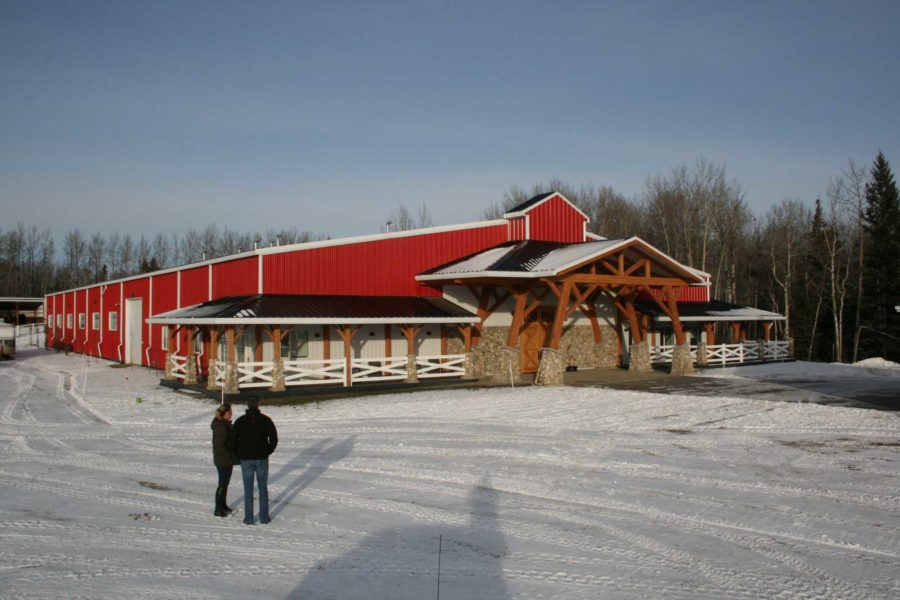
Insulation and heating elements
We’d strongly advise to keep your riding arena well insulated and heated if you live in cold weather climates. This will help you keep your horses warm.
However, if the weather in your area tends to remain warmer for most months of the year, then keeping your arena insulated is completely your choice.
To help you make an informed decision, here are a few (other) benefits of installing insulation in your indoor riding arena facility that you might want to consider:
- It helps promote a quieter environment
- It helps keeps your facility cooler in the summer heat
A Pointer: Mechanical ventilation systems cost more than natural ventilation systems; however, they provide more control to owners over the air exchange rate.
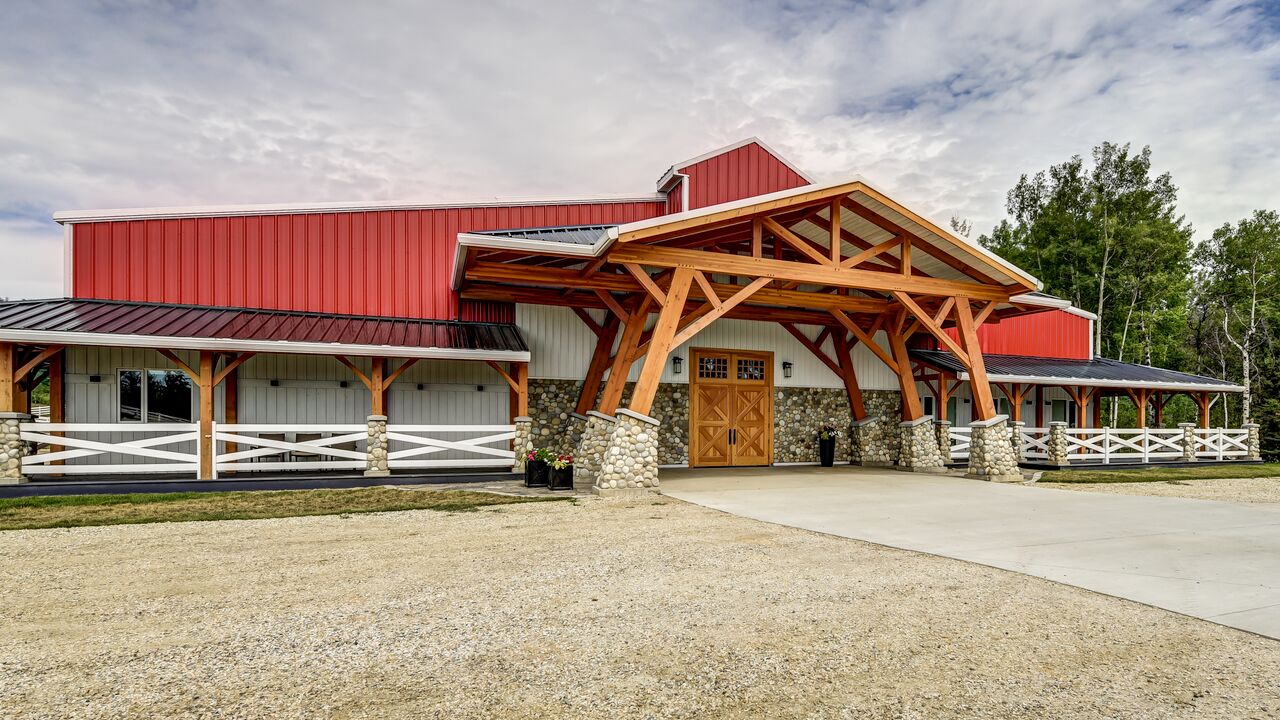
Functional elements of the arena
Last but not the least, functional elements.
Functional elements serve to increase the functionality of your indoor riding arena in terms of comfort, safety, hospitality and energy efficiency.
Below we list some popular functional elements used in indoor riding arenas:
- Stables: To house the horses inside an indoor riding arena. This way, owners don’t have to worry about moving their horses to (and from) the arena before (and after) every riding session.
- Cupolas: To add architectural accent to an indoor riding arena. These elements also provide ventilation to the building.
- Viewing area: To allow family, friends and fellow equestrians to watch the riders train the horses.
- Sky lights: To add natural lighting to an indoor riding arena. However, these elements can’t be added to fabric covered indoor riding facilities.
- Side lights: To add even more natural lighting to an indoor riding arena. These are much easier and less expensive to install than sky lights.
- Doors: To provide ventilation to an indoor riding arena. When incorporating man doors, owners must make sure that the doors are at least 12 feet high and 16 feet wide to allow mounted riders to easily pass through.
- Rider guards: To make an indoor riding arena safer for horses. These elements also provide a finished look to the interior of a riding arena.
- Rain gutters: To divert snow melt and rain water away from the doorways of a riding arena, keeping them from becoming mud holes.
- Vapor barriers: To reduce outside noise inside an indoor riding arena. These elements also make the building more energy efficient.
- Wainscoting: To make the interior of an indoor riding arena more visually appealing.
- LED lights: To keep an indoor riding arena well-lit and the horses inside the arena safe.
- Ceiling mounted fans: To provide ventilation inside the building of an indoor riding arena.
A Pointer: The planning for incorporating functional elements inside an indoor riding arena should always be done in the early phases of the project. This helps to budget better.
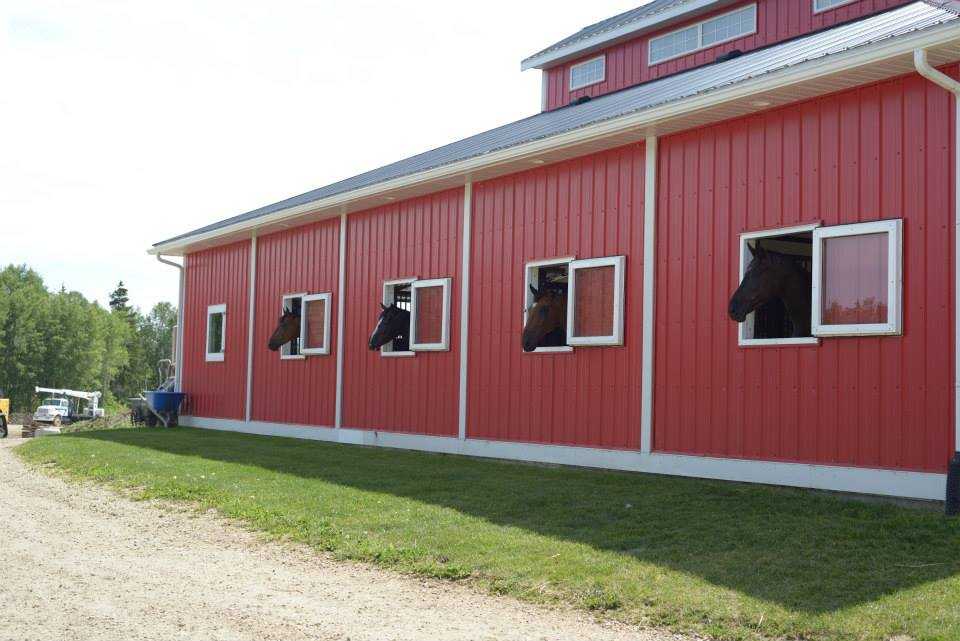
Closing words
For every equestrian, their horses are their pride. They love taking care of them, they love riding them, and they passionately strive to provide the best environment for them. When it comes to training and riding, the outdoors can be a dangerous place for your horse.
Outdoor surfaces can be slippery; often times, they’re inconsistently graded, and even when they are not, the weather can make them so. As such, the last thing you would want to happen is your horse to get injured while you train outdoors.
An indoor riding arena serves as a great solution in this case. It provides a safe environment for your horse and allows you to train without worrying about the snow, hail, rain or unpredictable surfaces.
In short, an indoor riding arena is the ultimate dream of every horse owner.
There is no fixed cost to building an indoor riding arena. There’re so many factors involved in the project that make every job unique.
The primary factors as we have discussed above include:
- What type of building you want to invest in
- How big your indoor riding arena will be
- Where will your indoor riding arena be located
- What type of footing you want to install
- What type of structural elements you want to include in your arena
- What type of functional elements you want to add to your arena
Each of these factors are highly customizable. How you customize them will ultimately dictate the total cost of the project.
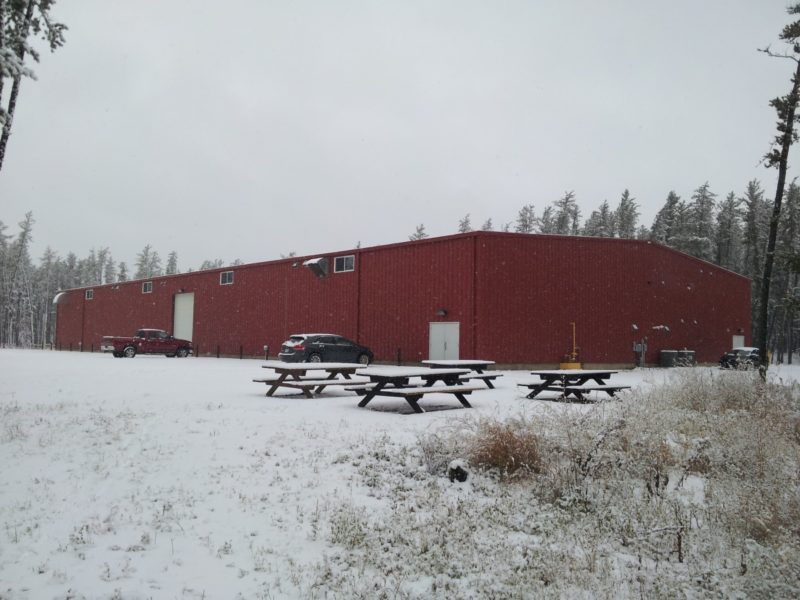
It’s also important to keep in mind that the overall cost of the project will depend on the contractor you hire. Every contractor/manufacturer will have their own rates, so you must choose a vendor that offers the best value for your project. You should choose a contractor that’s reliable, experienced, honest and dependable.
All in all, building an indoor riding arena is an investment. You should do your research and make an informed decision. Rest assured, your investment will serve you well for years to come.
